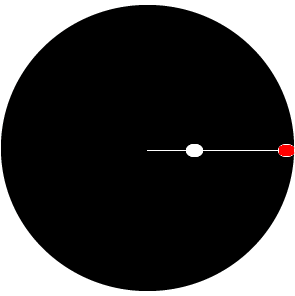Skiing is a sport that involves the near absence of frictional forces and the conservation of momentum.

The rotational speed of a skater can be changed by moving some part of the body closer or further from the axis of rotation.
The figure skater, shown on the right, pulls her arms in tight to her body so that her rotational speed increases significantly. This way she can execute more turns in a single jump.
As she lands she extends her arms and leg to slow her rotational speed. Like an elastic collision, angular momentum is conserved.

The conservation of angular momentum can be demonstrated in class using a rotating chair, as shown on the right.
Students can spin around with arms and legs stretched out. Their speed of rotation will significantly increase when they tuck their feet and hands close to the axis of rotation ie close to their body. Click to see a 1Mb video.
If the student holds a set of weights the effect is more dramatic.
Don't forget, momentum is mass multiplied by velocity
momentum = mass X velocity
When the person, sitting in the rotating chair, stretches his arms with the weights out, the weights are actually travelling at a greater speed than the person. As shown on the right an object that rotates on the edge of a circle actually travels further than a point near the centre in the same period of time. This means the point further from`the centre travels faster.
When the weight is brought closer to the centre it will be travelling slower. It will have less momentum. But the law of conservation of momentum states that a system that is not influenced by an outside force must maintain the same momentum. The system therefore, compensates by rotating the circle faster.
Click to see the image of the weight close to the centre.
Click to see the image of the weight further from the centre
